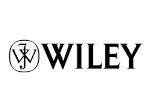Resource information
Land degradation reducing vegetation cover may affect the soil surface‐active fauna because both aboveground and belowground invertebrates depend on complex plant communities. In this study, we evaluated the effect of land degradation and restoration on soil fauna in northeast Brazil. Sites differed in degradation status: native vegetation, moderately degraded land, highly degraded land, and land under restoration for 4 years. Araneae and Coleoptera densities were significantly higher in natural vegetation and restored land (8 ± 4 ind./trap and 41 ± 21 ind./trap, respectively) than in degraded lands (−73% and −81%, respectively). The density of Formicidae was significantly higher in natural vegetation (206 ± 181 ind./trap) than in highly degraded land (32 ± 24 ind./trap), while restored land (51 ± 10 ind./trap) and moderately degraded land (37 ± 14 ind./trap) did not differ significantly from the other degradation levels. The density of Orthoptera did not follow the aforementioned patterns, while invertebrate groups mostly had highest densities in natural land and restored land. Linear regressions showed a strong negative relation between faunal density and soil bulk density, and a positive relation with soil organic matter due to an increase in plant cover. Our results indicate that land degradation simplifies soil surface‐active invertebrate communities with pronounced decreases in the density of Araneae, Coleoptera, and Formicidae, but that land restoration practices may recover the density of soil fauna even after only 4 years. Araneae, Coleoptera, and Formicidae respond sensitively to land degradation and restoration practice and are suggested as indicator groups for restoration success. Copyright © 2013 John Wiley & Sons, Ltd.



